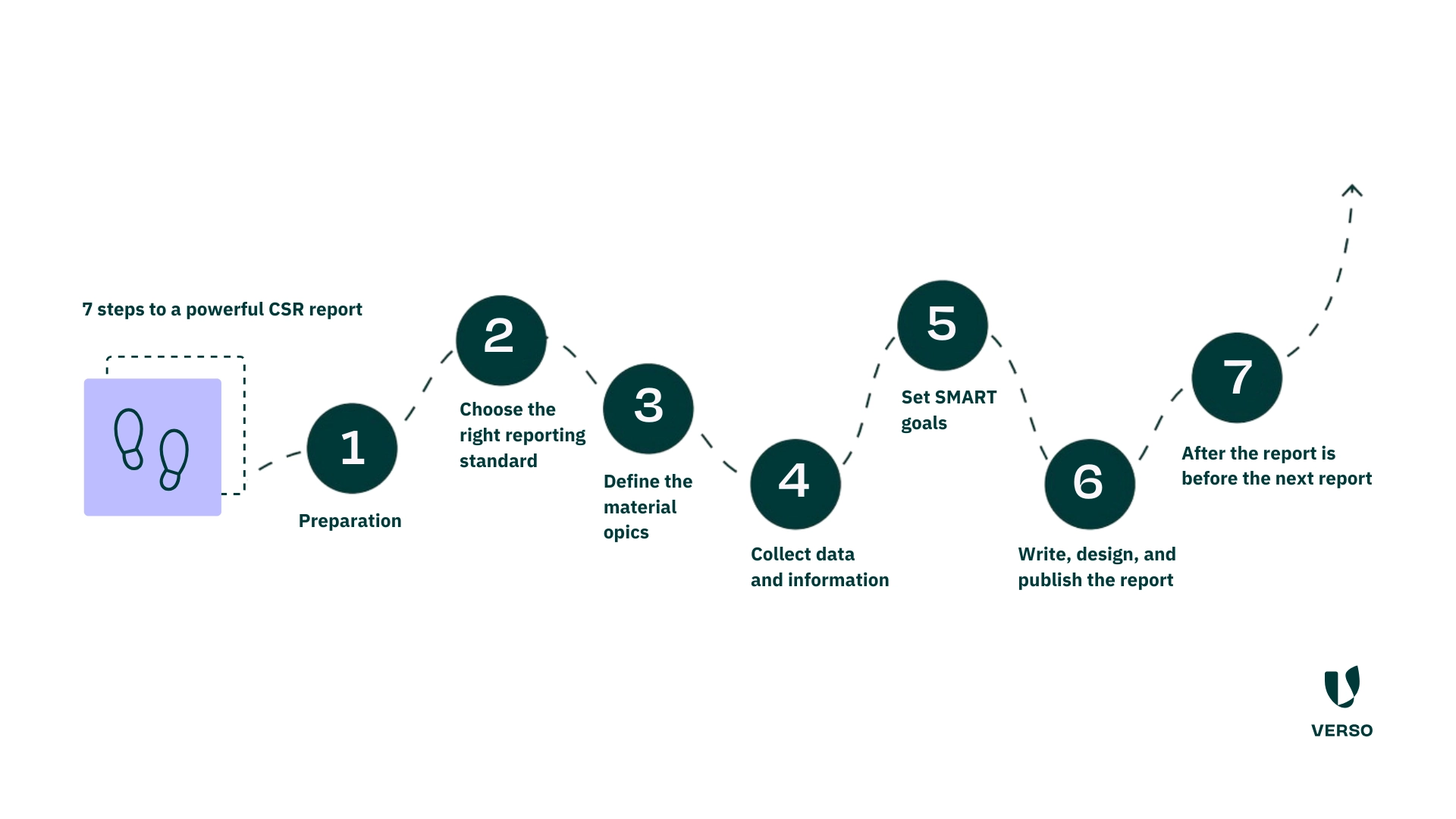
Sustainability Report – What Is It and What Do You Need to Know?
Some companies are intrinsically motivated to embed ESG within their organization, while others are driven by the CSRD requirements or aim to gain a competitive edge. For all of them, the sustainability report becomes a constant companion on their ESG journey. Here’s an overview of the key terms and requirements for reporting.
What is a sustainability report?
This is the first fundamental question to address. In their sustainability report, companies disclose information on:
- Environmental aspects,
- Social matters
- Corporate governance
The report outlines how external factors impact the company and how the company’s activities affect the environment and society. The first report usually reflects the status quo. However, the report is meant to go beyond that: it also describes strategies, targets, and actions aimed at enhancing sustainability.
The length, structure, and thematic focus of sustainability reports can vary greatly. This depends on the standard you choose. In general, you are free to decide which reporting framework to follow—unless you are bound to mandatory reporting requirements, such as those under the CSRD. In that case, you must comply with specific guidelines and often follow certain standards, such as the ESRS.
Sustainability, ESG, CSR – What’s the difference?
When it comes to reporting, all three terms essentially refer to the same concept: addressing the fundamental responsibility of companies toward the environment and society—now and in the future.
In recent years, the term CSR (Corporate Social Responsibility) was widely used in Germany.
- CSR describes a company’s responsibility for its impact on society.
- In practice, the term was often used to cover all three dimensions of sustainability: environmental, social, and governance aspects.
- The focus of CSR is more on the qualitative assessment of a company’s actions regarding sustainability, corporate values, and social engagement.
The term ESG has now become increasingly established.
- ESG stands for Environmental, Social, and Governance.
- The term originates from the financial sector and focuses primarily on assessing companies based on environmental, social, and governance factors.
- Measuring sustainability follows a more quantitative approach.
The broader term sustainability is generally used synonymously with CSR and ESG. It also accurately describes the reporting process, as it covers sustainability across all areas of the business.
You can find more on this topic in our blog post “CSR, ESG, Sustainability – What’s the Difference?”.
When do I have to publish my first sustainability report?
With the new Corporate Sustainability Reporting Directive (CSRD), many companies in Germany will soon be required to publish a sustainability report. The reporting obligation is based on criteria such as the number of employees, revenue, and total assets.
Although the first report often requires significant effort and may contain only limited insights into progress and developments, our honest advice is: Start now!
Our CSRD factsheet helps you quickly find out if and when your company is subject to reporting requirements—and what your next steps should be.
How do I create a sustainability report?
The first sustainability report can be demanding. You’re likely doing this for the very first time, with little prior experience—targeted training, such as in the VERSO Academy, can be a great help. You often have no benchmarks yet, no established processes or structures, and still need to find the right reporting software—based on our experience with customers, the list of challenges for a first report is long.
That’s where we come in: With the VERSO ESG Hub, you can create your sustainability report easily and efficiently. To help you get started, we’ve created a hands-on guide “7 Steps to Your CSR Report” that walks you through the process step by step toward a meaningful sustainability report.
For CSRD beginners, we’ve also developed a 10-step guide for your CSRD report and share our tips for efficient data collection. And when it comes to software, you can rely on VERSO for your CSRD reporting: our CSRD Suite offers you an all-in-one solution.


